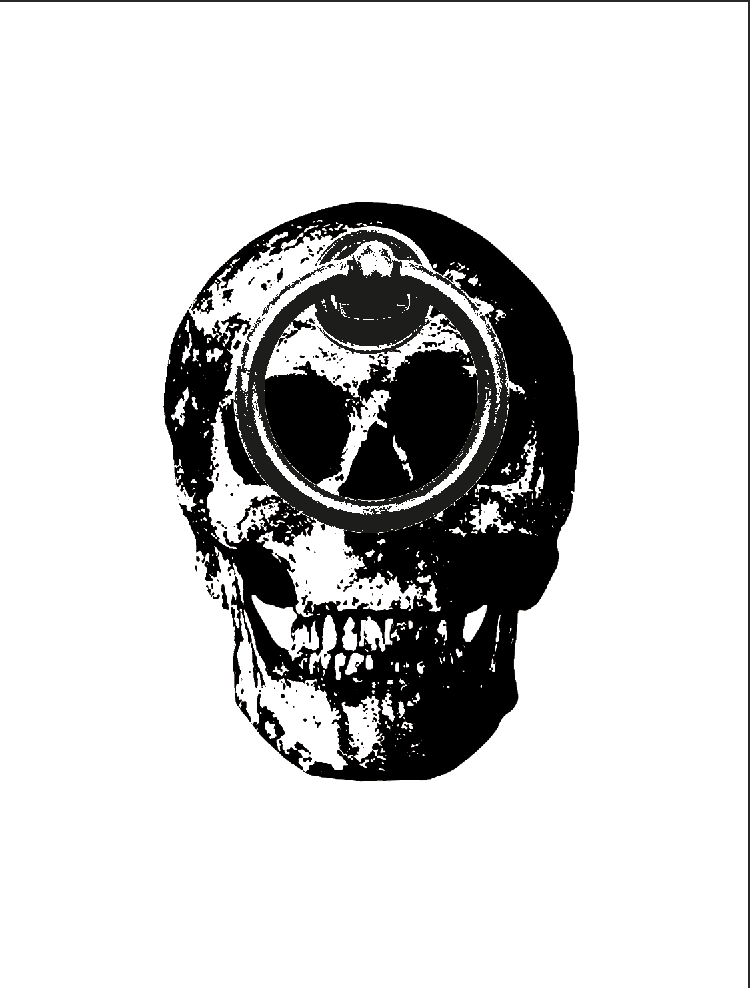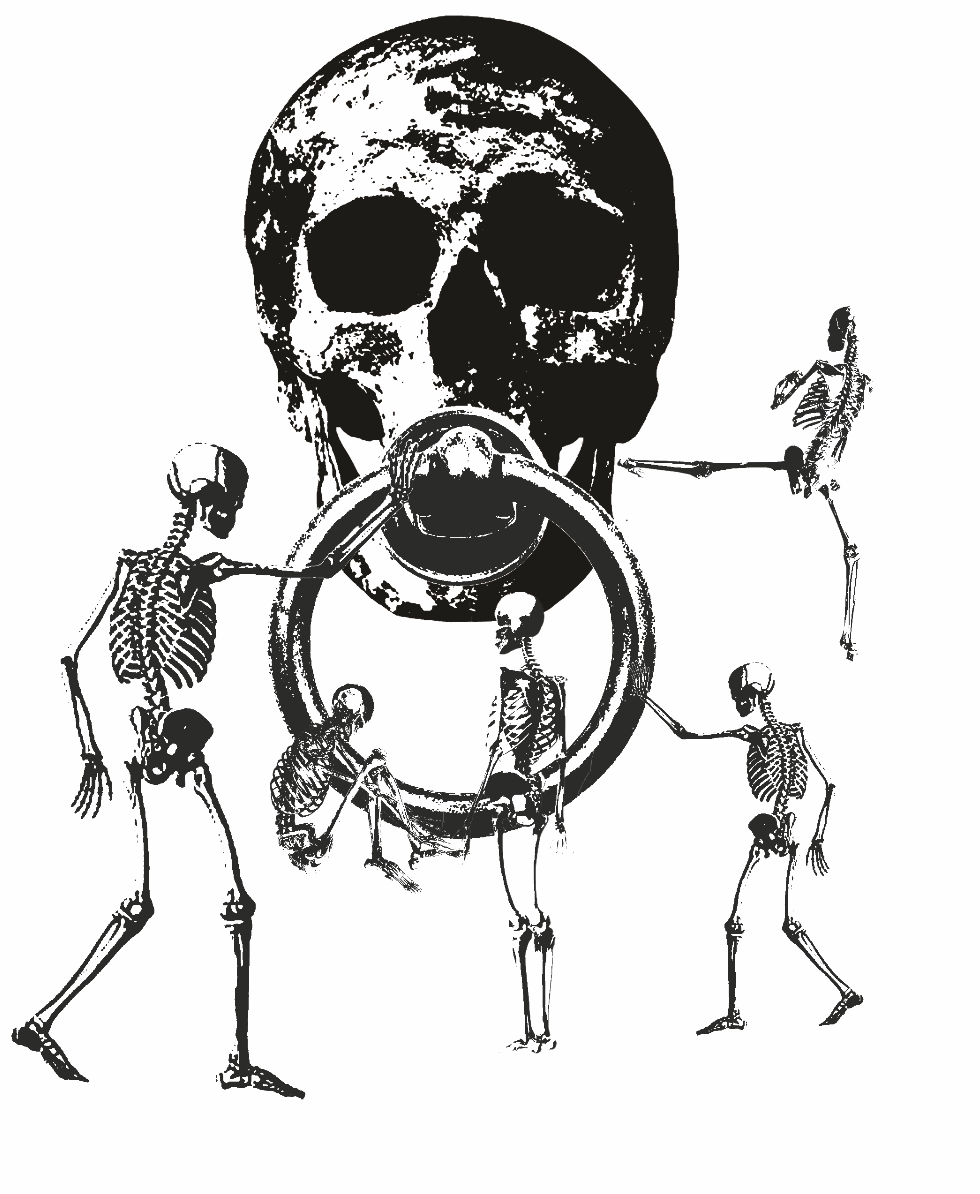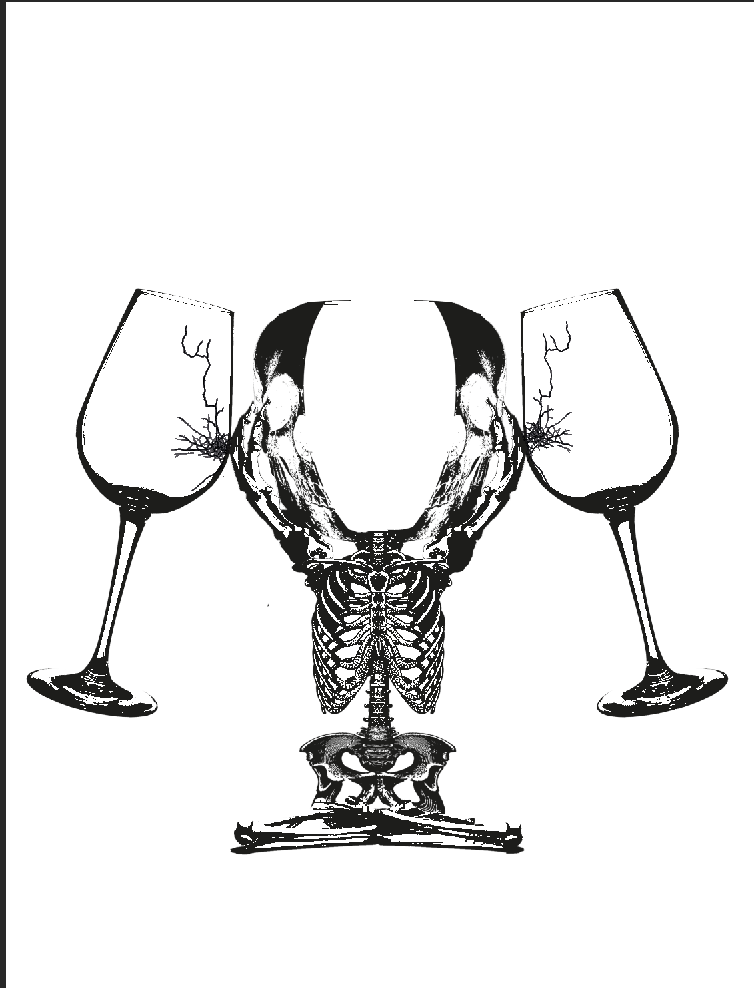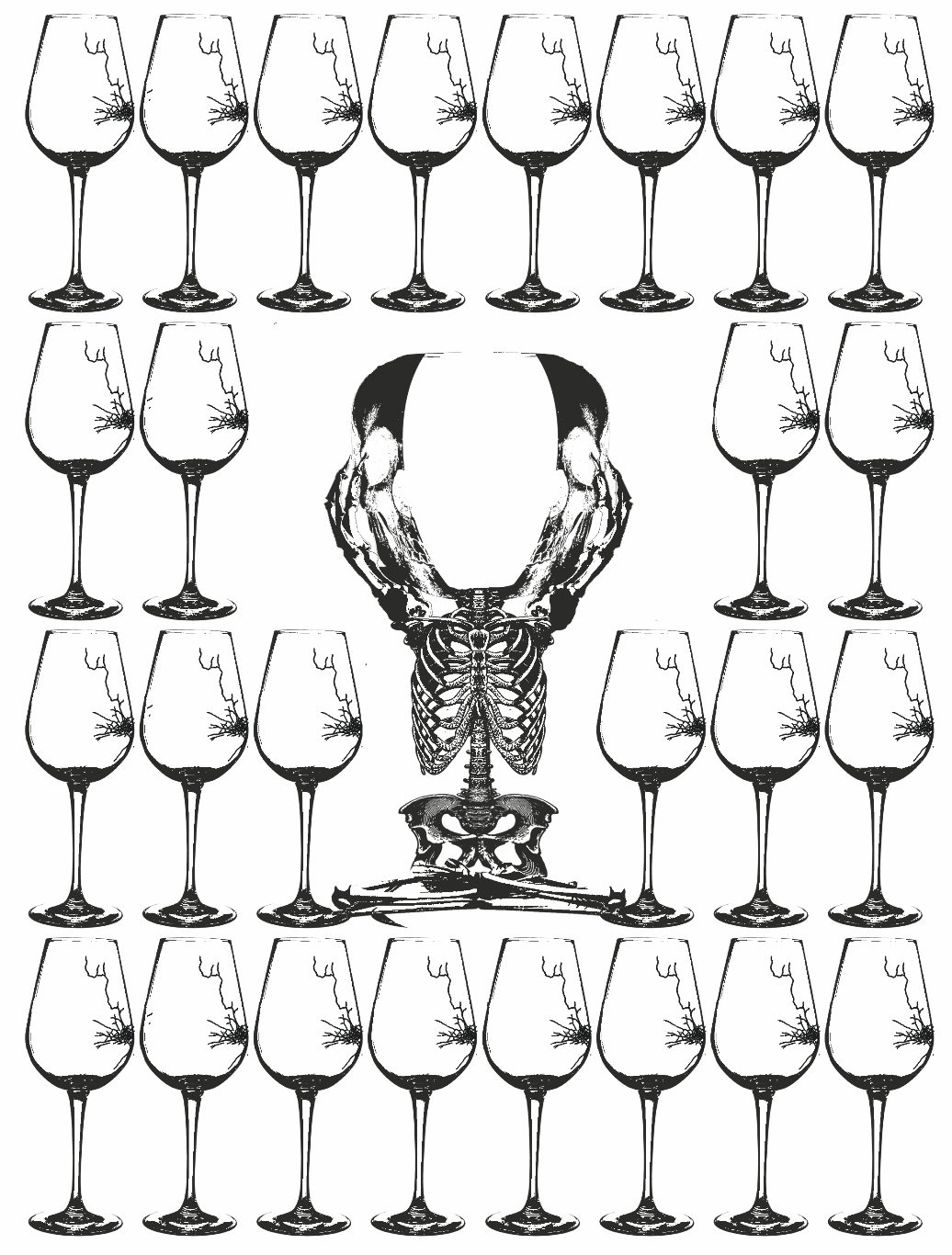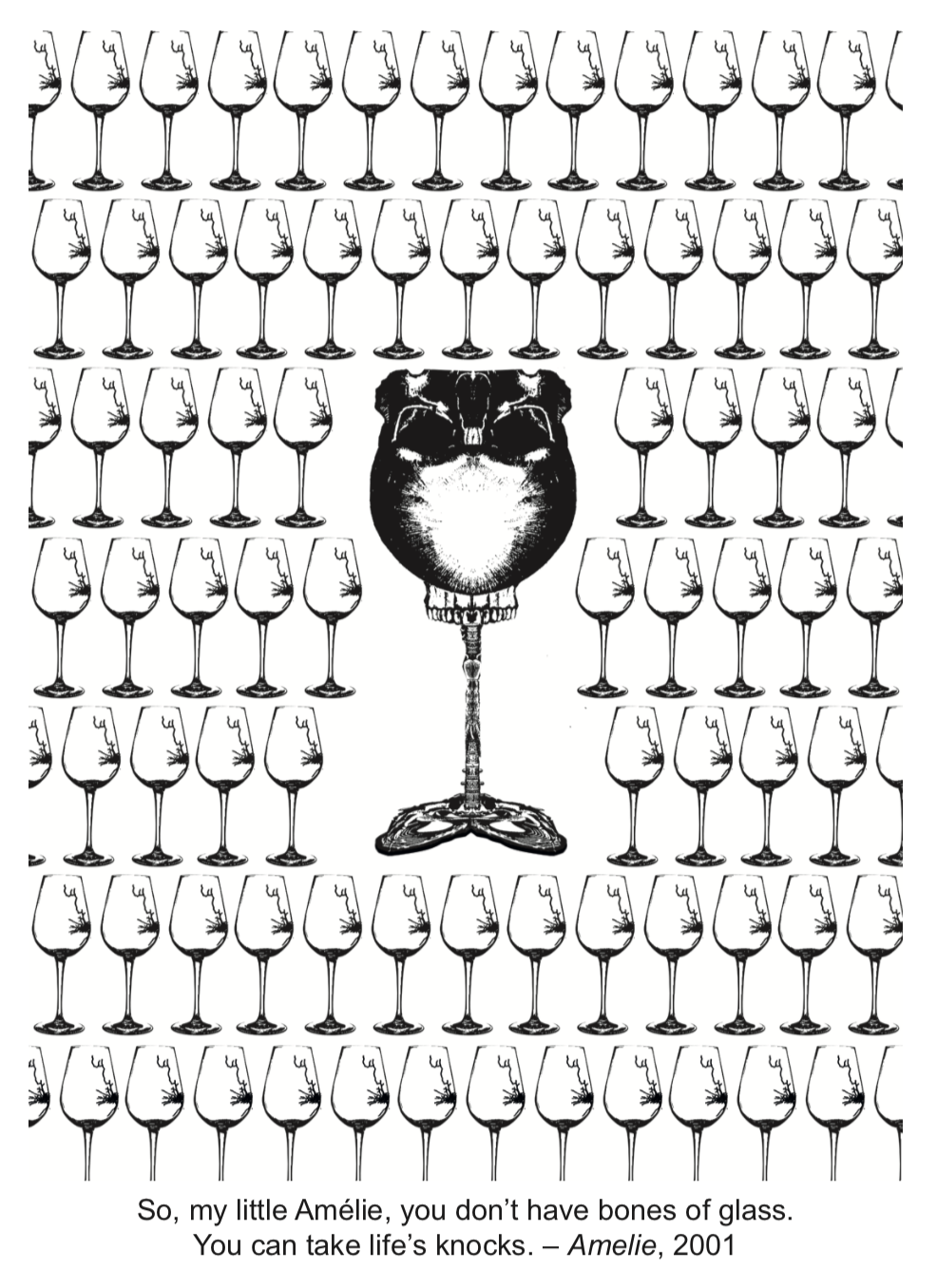My last quote to explore,
So, my little Amélie, you don’t have bones of glass. You can take life’s knocks.
This was when Mr Dufayel told Amelie that she would need to get out of her comfort zone to pursue the man she loves. She cannot wait anymore and she can take it because she isn’t made of glass like Mr Dufayel.
Draft 1. The most literal and banal. Literally you are made of bones, the world will knock you but you won’t break. Obviously it looked too simple.
Draft 2, I then explored the idea of knocking on a skull and what better way to illustrate this than a door knocker. It seemed a little too plain, so I added “people” to knock the door after.
Draft 3, I really liked that this work wasn’t as symmetrical as my previous few works and there was interaction and movement to it. I do feel however, it does not encapsulate the quote anymore.
Out of whim, I created a draft 4, which was a wine glass that was made of bones. It looked more like a chalice, but you get the drift. I did this because I thought wine glasses were fragile and that it being made of bones would augment the idea. However, I did not take into account that I need to show life knocking.
It brings me to draft 5. However, this then makes me feel like “Amelie” personified by the bone wine glass is hurting the glass objects when knocked onto it. It then reverses the idea to Amelie being to strong and hurting Dufayel, which is… incorrect.
Draft 6, I then recalled an idea of repetition to show strength and emphasis. I decided to repeat the broken wine glasses around the bone-glass. In the it shows that no matter what, the glass shatters but the bones remain intact. I guess I made my point here.
After consulting Mimi, she said that my chalice looks too photoshopped and I should make it more crafted instead of a human body. I should also make the glasses smaller to make the chalice stand out.
Using segments of a human skeletal system, I re-crafted the chalice to look more like a glass than a skeletal system. I also used the idea of emphasis to augment the intention of strength. Overall I am quite happy how this turned out. It’s not my usual route to do something like this. I would either go full illustrative or full pattern, but this is a simple idea which resulted from me editing concept execution to be concise.
Post-assignment. I really learnt how to be concise with myself. I need to keep doing that so that I can be a stronger designer, balancing ostentatiousness with good design. I think the pit fall of many people is that they want their works to look pretty and grandeur, but their concept breaks apart and their work needs to be heavily explained. The design no longer speaks for itself.
Overall, I want to reach the level in which people get my work without the need of explanation. They get my intentions and they get my designs.

